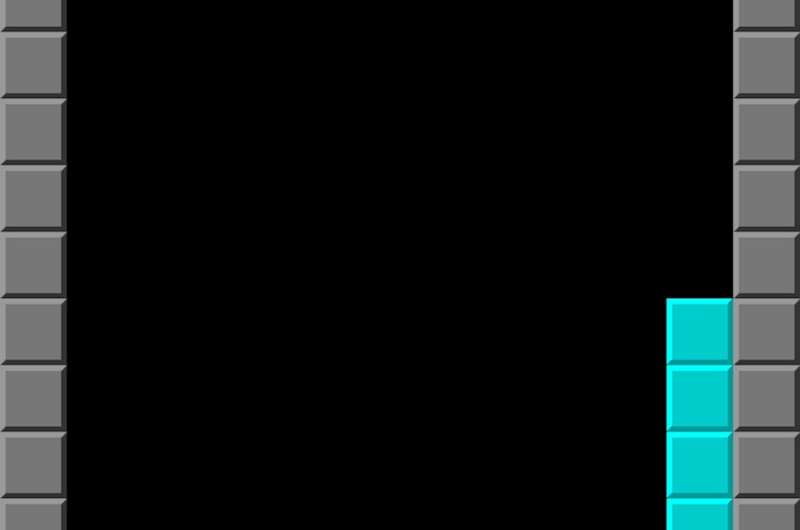This article has been reviewed according to Science X's editorial process and policies. Editors have highlighted the following attributes while ensuring the content's credibility:
fact-checked
trusted source
written by researcher(s)
proofread
Anyone can play Tetris, but architects, engineers and animators alike use the math concepts underlying the game

With its bright colors, easy-to-learn rules and familiar music, the video game Tetris has endured as a pop culture icon over the last 40 years. Many people, like me, have been playing the game for decades, and it has evolved to adapt to new technologies like game systems, phones and tablets. But until January 2024, nobody had ever been able to beat it.
A teen from Oklahoma holds the Tetris title after he crashed the game on Level 157 and beat the game. Beating it means the player moved the tiles too fast for the game to keep up with the score, causing the game to crash. Artificial intelligence can suggest strategies that allow players to more effectively control the game tiles and slot them into place faster—these strategies helped crown the game's first winner.
But there's far more to Tetris than the elusive promise of winning. As a mathematician and mathematics educator, I recognize that the game is based on a fundamental element of geometry, called dynamic spatial reasoning. The player uses these geometric skills to manipulate the game pieces, and playing can both test and improve a player's dynamic spatial reasoning.
Playing the game
A Russian computer scientist named Alexey Pajitnov invented Tetris in 1984. The game itself is very simple: The Tetris screen is composed of a rectangular game board with dropping geometric figures. These figures are called tetrominoes, made up of four squares connected on their sides in seven different configurations.
The game pieces drop from the top, one at a time, stacking up from the bottom. The player can manipulate each one as it falls by turning or sliding it and then dropping it to the bottom. When a row completely fills up, it disappears and the player earns points.
As the game progresses, the pieces appear at the top more quickly, and the game ends when the stack reaches the top of the board.
Dynamic spatial reasoning
Manipulating the game pieces gives the player an exercise in dynamic spatial reasoning. Spatial reasoning is the ability to visualize geometric figures and how they will move in space. So, dynamic spatial reasoning is the ability to visualize actively moving figures.
The Tetris player must quickly decide where the currently dropping game piece will best fit and then move it there. This movement involves both translation, or moving a shape right and left, and rotation, or twirling the shape in increments of 90 degrees on its axis.
Spatial visualization is partly inherent ability, but partly learned expertise. Some researchers identify spatial skill as necessary for successful problem solving, and it's often used alongside mathematics skills and verbal skills.
Spatial visualization is a key component of a mathematics discipline called transformational geometry, which is usually first taught in middle school. In a typical transformational geometry exercise, students might be asked to represent a figure by its x and y coordinates on a coordinate graph and then identify the transformations, like translation and rotation, necessary to move it from one position to another while keeping the piece the same shape and size.
Reflection and dilation are the two other basic mathematical transformations, though they're not used in Tetris. Reflection flips the image across any line while maintaining the same size and shape, and dilation changes the size of the shape, producing a similar figure.
For many students, these exercises are tedious, as they involve plotting many points on graphs to move a figure's position. But games like Tetris can help students grasp these concepts in a dynamic and engaging way.
Transformational geometry beyond Tetris
While it may seem simple, transformational geometry is the foundation for several advanced topics in mathematics. Architects and engineers both use transformations to draw up blueprints, which represent the real world in scale drawings.
Animators and computer graphic designers use concepts of transformations as well. Animation involves representing a figure's coordinates in a matrix array and then creating a sequence to change its position, which moves it across the screen. While animators today use computer programs that automatically move figures around, they are all based on translation.
Calculus and differential geometry also use transformation. The concept of optimization involves representing a situation as a function and then finding the maximum or minimum value of that function. Optimization problems often involve graphic representations where the student uses transformations to manipulate one or more of the variables.
Lots of real-world applications use optimization—for example, businesses might want to find out the minimum cost of distributing a product. Another example is figuring out the size of a theoretical box with the largest possible volume.
All of these advanced topics use the same concepts as the simple moves of Tetris.
Tetris is an engaging and entertaining video game, and players with transformational geometry skills might find success playing it. Research has found that manipulating rotations and translations within the game can provide a solid conceptual foundation for advanced mathematics in numerous science fields.
Playing Tetris may lead students to a future aptitude in business analytics, engineering or computer science—and it's fun. As a mathematics educator, I encourage students and friends to play on.
Provided by The Conversation
This article is republished from The Conversation under a Creative Commons license. Read the original article.![]()




















